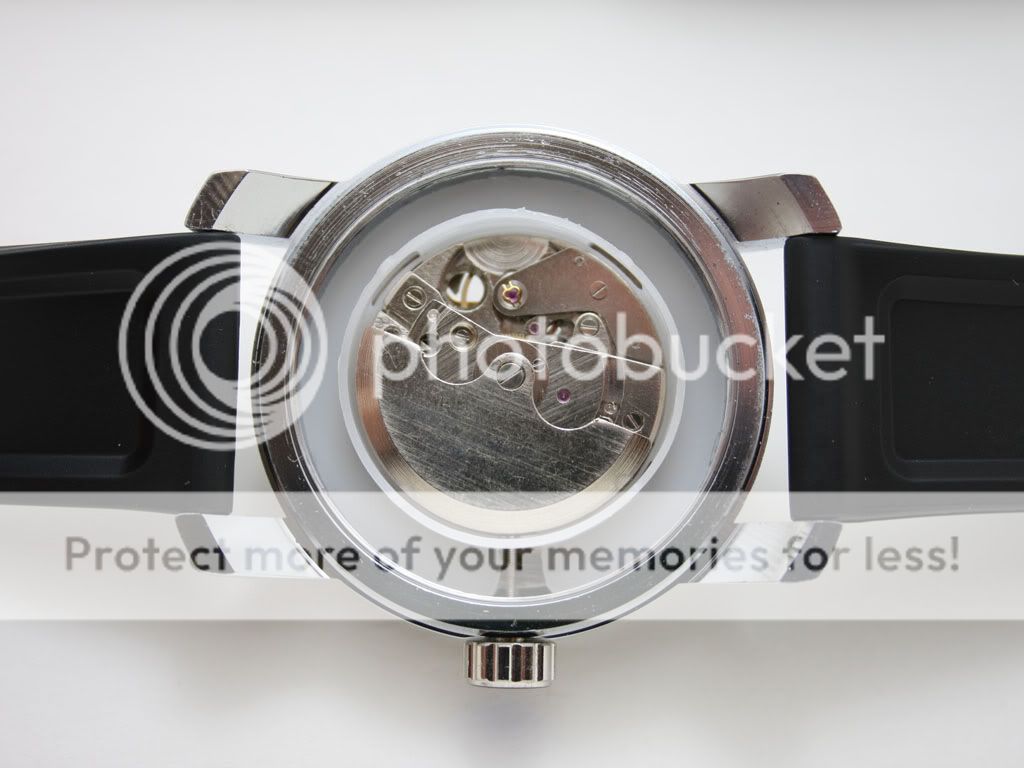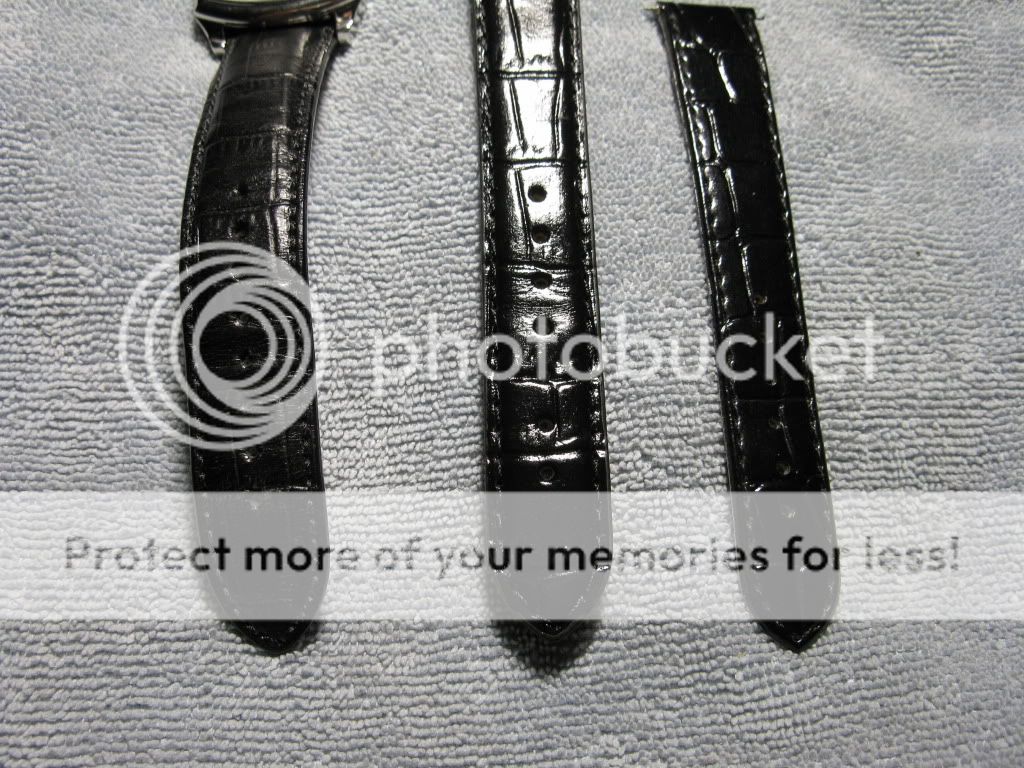Yes, a third Fuyate has landed. These Fuyate watches may be churned out of the same junk watch factories as all the other bottom-feeding Chinese brands, but they tend to be somewhat smarter looking. I purchased this one on the whimsiest of whims, because it was the least ugly open heart design I've come across lately. Perhaps not a great commendation, but there you have it.
 Yes, I finally broke out my DSLR and light tent.
Yes, I finally broke out my DSLR and light tent.
An open heart watch is one with the balance wheel exposed to view through the front of the dial. It's great fun to watch it beating away, just as with a skeleton watch, but because they are otherwise normally dialed, open heart watches are easier to read and a bit less blingy. But I find most fairly unappealing. The open heart is often called a tourbillon in listings (including the one for this watch), but that is incorrect. Even cheap Chinese versions of real tourbillon watches usually start about $1000. This watch was $21 shipped.
It measures about 44mm across and is perhaps 18mm in thickness. Quite chunky. The hands and indices are blued, which looks nice against the white dial, and all the hands are (weakly) lumed. It has three sub-dials. At 3:00 is a 24hr sub, at 6:00 a day-night indicator, and at 9:00 the open heart. It has a solid stainless back (no gasket), which is fine, since the unbranded movement is nothing to look at. But here it is anyway:

The movement seems to run well, but the quality otherwise is not great. The plating of the mystery metal case is poor and pitted, the case back very thin, and dial and surround look cheap. The hands are less bad, and it all looks fine if you do not scrutinize. The only glaring oddity is that a very large opening has been machined into the 9:00 side of the case, and then filled with black epoxy. Perhaps it's a misguided attempt at decoration. More likely is that this same case is used for other models where it serves a function, but here is just filled in. Not sure, but it still looks fine at a distance, especially with the strap I'm using.
The watch came on the usual PU leather croco-grain strap, but I purchased a cheap rubber strap separately to replace it. It's great and suits the watch, which is very comfortable on it. The watch I like, but this strap I love.
 Yes, I finally broke out my DSLR and light tent.
Yes, I finally broke out my DSLR and light tent.An open heart watch is one with the balance wheel exposed to view through the front of the dial. It's great fun to watch it beating away, just as with a skeleton watch, but because they are otherwise normally dialed, open heart watches are easier to read and a bit less blingy. But I find most fairly unappealing. The open heart is often called a tourbillon in listings (including the one for this watch), but that is incorrect. Even cheap Chinese versions of real tourbillon watches usually start about $1000. This watch was $21 shipped.
It measures about 44mm across and is perhaps 18mm in thickness. Quite chunky. The hands and indices are blued, which looks nice against the white dial, and all the hands are (weakly) lumed. It has three sub-dials. At 3:00 is a 24hr sub, at 6:00 a day-night indicator, and at 9:00 the open heart. It has a solid stainless back (no gasket), which is fine, since the unbranded movement is nothing to look at. But here it is anyway:

The movement seems to run well, but the quality otherwise is not great. The plating of the mystery metal case is poor and pitted, the case back very thin, and dial and surround look cheap. The hands are less bad, and it all looks fine if you do not scrutinize. The only glaring oddity is that a very large opening has been machined into the 9:00 side of the case, and then filled with black epoxy. Perhaps it's a misguided attempt at decoration. More likely is that this same case is used for other models where it serves a function, but here is just filled in. Not sure, but it still looks fine at a distance, especially with the strap I'm using.
The watch came on the usual PU leather croco-grain strap, but I purchased a cheap rubber strap separately to replace it. It's great and suits the watch, which is very comfortable on it. The watch I like, but this strap I love.
 Seller pic.
Seller pic.












